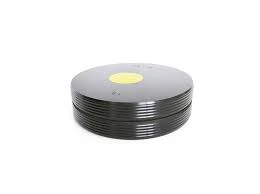Mobile:+86-311-808-126-83
Email:info@ydcastings.com
gearbox casing
The Importance of Gearbox Casings in Mechanical Engineering
In the realm of mechanical engineering, the design and functionality of components play a crucial role in ensuring efficient operation. Among these components, the gearbox casing stands out as a vital element in the transmission of power and motion. A gearbox casing serves not only as a protective shell for the internal gears but also significantly impacts the overall performance and durability of the machinery it encapsulates.
Gearbox casings are typically made from durable materials such as aluminum, cast iron, or composite materials, each chosen based on the application requirements. The primary purpose of the casing is to house the gears and ensure that they operate smoothly without exposure to external contaminants such as dust, dirt, and moisture. By creating a controlled environment, the casing helps in maintaining the optimal lubrication of the gears, which is essential for reducing wear and tear during operation.
The design of the gearbox casing is also crucial from an engineering perspective. It must be engineered to withstand various stresses and loads that the gearbox will encounter during operation. Properly designed casings can help mitigate issues such as vibration, which can lead to fatigue and failure over time. Furthermore, the casing must accommodate the thermal expansion of materials, as gears can generate significant heat during operation. An effective gearbox casing will include features such as ventilation or cooling provisions to manage heat dissipation.
gearbox casing

In addition to structural integrity, the aesthetic aspect of the gearbox casing should not be overlooked. In some applications, particularly in automotive and high-performance machinery, the visual appeal of gearbox casings is important for branding and consumer perception. Manufacturers often utilize advanced design techniques, including computer-aided design (CAD) and finite element analysis (FEA), to optimize the geometry and appearance of the casing while maintaining its functional integrity.
Moreover, modern advances in manufacturing processes, such as 3D printing and precision machining, have expanded the possibilities for customizing gearbox casings. This flexibility allows engineers to tailor designs to meet specific performance criteria or to produce lightweight, high-strength components that enhance the overall efficiency of the machinery.
In conclusion, the gearbox casing is a critical component that plays an essential role in the functionality, durability, and performance of mechanical systems. Its design encompasses considerations of material selection, structural integrity, heat management, and aesthetic appeal. As technology progresses, the evolution of gearbox casing design continues to adapt, ensuring that it meets the ever-changing demands of modern engineering. Through ongoing innovation, gearbox casings will remain at the forefront of mechanical systems, contributing to the advancement of numerous industries.
-
Why Should You Invest in Superior Pump Castings for Your Equipment?NewsJun.09,2025
-
Unlock Performance Potential with Stainless Impellers and Aluminum End CapsNewsJun.09,2025
-
Revolutionize Your Machinery with Superior Cast Iron and Aluminum ComponentsNewsJun.09,2025
-
Revolutionize Fluid Dynamics with Premium Pump ComponentsNewsJun.09,2025
-
Optimizing Industrial Systems with Essential Valve ComponentsNewsJun.09,2025
-
Elevate Grid Efficiency with High-Precision Power CastingsNewsJun.09,2025











